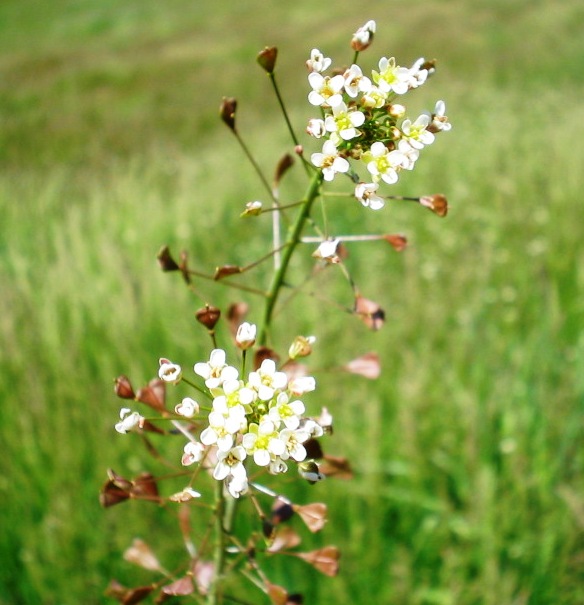- Habitat: lawns, in meadows, roadsides, vacant lots and fields
- Height: flower stalk grows up to 2½ft tall with wedge shaped fruit pods
- Time(Season): Spring through Fall
- Use: raw in salads, simmered in soups, stews and sauces Sauté, steam or cook for about 10 minutes
- Nutritional Value: contains compounds like alkaloids, histamine, flavonoids, thiamine, organic acids, phenols, volatile oils and salts and vitamins. Shepherd’s purse hasanaleptic properties and can regulate blood pressure.
- Leaves: a rosette of bottom leaves up to 9 inches across like a dandelion
- Flower: tiny, white 4 petaled flowers on a stalk
|
Pictures:
|
